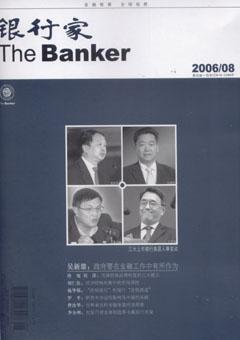伯南克的解讀
THE circumstances were not auspicious. Less than two hours before Ben Bernanke, chairman of America's Federal Reserve, made his semi-annual report to Congress on July 19th, new data showed that American inflation, yet again, was unexpectedly high. The core consumer-price index (CPI), which excludes food and energy, jumped 0.3% in June and is now 2.6% higher than it was a year ago, well above the maximum with which Mr Bernanke is thought to be comfortable.
Given the fuss that he and his colleagues have recently made about such “unwelcome” rises in inflation, many economists expected a nasty June inflation report to seal another rise in short-term interest rates when the central bankers next meet on August 8th. Michael Prell, a former head of research at the Fed, said a 0.3% inflation figure would make it “hard” not to tighten. And that is exactly what financial markets expected—for about 90 minutes. After the CPI figures were released, futures markets raised their expectation of an August rise from 60% to 90%.
Pretty soon, however, Wall Street had a wholly different view. Share prices rose and bond yields and the dollar fell as investors listened to Mr Bernanke and decided the Fed might not tighten policy much more after all. Judged by the futures market, the odds of a rate hike in August fell back, ending the day at around 70%.
Was this another flip-flop from a man who has developed a reputation for confusing financial markets by sounding alternately hawkish and dovish? Or was Wall Street reading too much softness into the Fed chairman's comments?
The answer is a bit of both. Mr Bernanke's testimony was carefully balanced. He repeated his line that recent rises in inflation are “of concern” and he told lawmakers several times that unexpectedly high inflation was the single biggest risk to America's expansion. He was fairly optimistic about growth. Although the housing market was slowing, Mr Bernanke pointed out that other areas, including exports and non-residential construction, were picking up. His forecast was that the economy would slow, but to roughly its trend rate of growth. This was not a testimony, in short, that ruled out further rises in short-term interest rates.
揃ut nor did Mr Bernanke show any signs of panic about inflation. Quite the opposite. There was no mention of June's consumer-price figures. The updated economic forecasts published alongside Mr Bernanke's testimony show that the Fed expects inflation to slow, but that for at least the next 18 months consumer-price inflation will remain higher than the central bankers forecast in February and, most important, above their informal target of between 1% and 2%. The Fed now expects its preferred inflation gauge, the deflator for personal consumption expenditures excluding energy and food, to rise by 2.25-2.5% this year and by 2-2.25% in 2007. No sign there, in other words, that the Bernanke Fed is in any great hurry to get inflation back within range.
If Mr Bernanke's aim this week was to create room for manoeuvre and give the Fed the option to pause in its rate-tightening, he achieved it—but at the price of some coherence. If the economy is slowing only modestly, as his words suggested, his relaxed attitude to inflation seems odd, especially after recent months' inflation figures.
One possibility is that Mr Bernanke is less bullish than he lets on. The Fed has lowered its expectations for GDP growth in 2006 to 3.25-3.5%. That implies a sharp slowdown in the second half of the year, to a rate well below 3%. The other is that he is simply not worried enough.
責任編輯:張明莉

